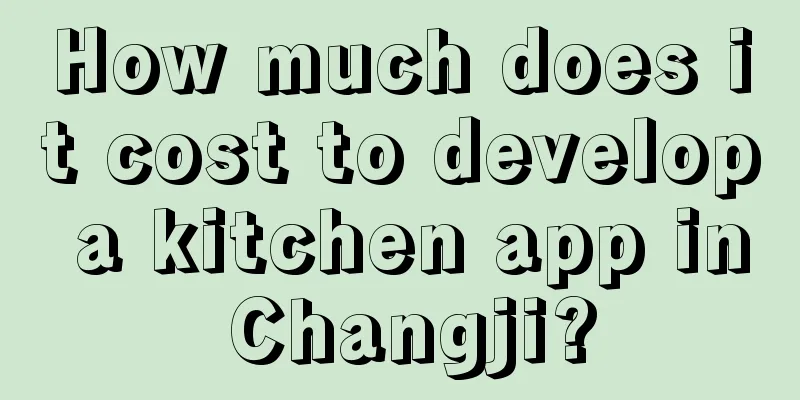Wobbly tablet computer

|
The tablet market is undergoing a seismic change. First, Apple announced at this year's WWDC conference that it would launch an iPadOS system independent of iOS. This is also the first system upgrade since the birth of the iPad. But two weeks later, Google announced that it would no longer launch the Pixel series of tablets in the future, casting a shadow over the already pessimistic tablet market.
As a product sandwiched between smartphones and traditional computers, tablet computers have absorbed the strengths of both categories of products, hoping to open up a new usage scenario for users. Its screen is larger than that of a smartphone, which means it can provide a better experience than a mobile phone in some usage scenarios such as watching videos, playing games and browsing the web. In fact, the size difference is also an important factor in the initial popularity of tablets. Compared to PCs, tablets have built-in touch screens, do not require physical keyboards, and are designed to downplay the concept of power on and off, making them significantly superior to laptops in terms of portability and ease of use. Because of these features, when Steve Jobs was lying on the sofa playing with the first generation iPad in 2010, many people believed that this type of product would become our future personal computer, just like touch-screen phones replaced feature phones. But some people have questioned it, believing that it is just an enlarged version of the iPhone.
Tablets have been wavering between these two views for a long time, and it is still the case today, but the other two categories have not left any room for tablets to develop. When smartphones can make the front screen 6 inches or more by simplifying components, and laptops can also detach the keyboard and use a touch screen, the tablet computer has lost the form factor advantage that it was originally proud of. However, the differentiation between products is not only reflected in hardware. If tablets can complete certain tasks better than laptops and mobile phones, users will naturally become dependent on tablets. But in reality, we rarely see such a scenario. Both Apple and Google initially positioned tablet computers as content consumption devices. So tablet computers that seem to be able to do everything do not actually stimulate many new demands. Instead, users don’t know what to do with them after buying them, or they use them as instant noodle lids after using them for a while. Similar examples abound. In most cases, it is fine to use it, but you can live just as well without it. The main reason why tablet computers have been in a lukewarm state in the past is that their positioning is unclear and the demand has not shown enough popularization. Whether it is browsing the web, watching videos, playing games or reading e-books, its usage scenarios are highly overlapped with smartphones and computers. The so-called large screen advantage is no longer prominent compared to the current full-screen mobile phones. This has also hindered the further expansion of tablet computers, and even attempts in enterprise applications and education have not brought significant boosts. To date, the market size of tablet computers is only one-tenth of the smartphone market, and even less than traditional PCs such as desktops, laptops and ultrabooks. Apple's solution is to create a new system for the iPad that is derived from iOS but does not abandon the original software and service ecosystem. Once upon a time, Apple adopted the same closed strategy on iPad as it did on iPhone. It could not be connected to other devices as easily as a traditional PC, and its software functions were unified with those of mobile phones. The only difference between the two was the screen size. However, as the iPad's hardware level has improved, the iOS system has become the root cause of the iPad's development. This system, originally created for mobile phones, can no longer meet the needs of users who want to use the iPad as a productivity tool rather than an entertainment consumer product. That's why we see more diverse split-screen pages, new copy/paste/undo gesture interactions, more complex file managers, and full support for USB file transfers, text fonts, format types, etc. All the changes revolve around one core, which is to make the iPad more like a laptop that can be used for work. Similarly, Microsoft also hopes to make an all-round product that can meet the needs of both laptops and tablets, which is why the Surface series came into being. The two-in-one device concept it created has become the new development direction of Windows laptops. At this point, it doesn’t make much sense whether to call them “tablets” or “computers”. The boundary between the two is gradually blurring, and their integration is an inevitable trend. But you can still see some differences in human-computer interaction. For example, Apple still insists on finger touch as the core, otherwise there would not be copy and paste operations in iPadOS that rely on three-finger pinch and slide gestures; and because of system-level reasons, Surface still finds it difficult to get rid of the assistance of mouse, keyboard and shortcut keys. Of course, from Apple's perspective, it hopes that developers can spend more time on iPad application design and design a UI interface that is more suitable for presentation and operation on a large screen, rather than just making an enlarged version of a mobile phone application. The latter is also one of the root problems that ruined Android tablets. You can see similar views in almost all articles commenting on Android tablets, but there has been no progress in the past few years. To the point that no one has confidence in "Android application adaptation for tablets" anymore.
Some people even joked that Google has been making tablets for six years, but the most popular one is still the first-generation Nexus 7, because its size and proportions are similar to those of smartphones, so most mainstream applications do not need to consider new screen layout issues. However, the application experience of subsequent Nexus 10 and Nexus 9 products has regressed. Failure to promote the development of the tablet ecosystem is a mistake made by Google as a platform. When most people believe that Android tablets are just "bedding" for watching iQiyi, and even lack the motivation to spend money on tablets, no developer will be willing to seriously create applications for tablets. In the end, this platform will only be filled with all kinds of shoddy content, forming a vicious cycle. Whether someone can give developers the confidence to create tablet applications is also the difference between iPad and other tablets. Apple chose to launch iPadOS not only because iPad is still a profitable business, but also because it needs to let developers and users see that iPad is not dispensable, but a unique content production tool besides smartphones and PCs. In Google's eyes, pure Android tablets don't seem to have a very bright future. Maybe Google will continue to make large-screen devices with keyboards, but it probably doesn't want to use the word "tablet" anymore. |
<<: It is becoming increasingly difficult to flash a mobile phone. What should Android users do?
>>: Sigh! Nearly 8 years after Jobs' death, Apple has lost another soul figure
Recommend
Aston Martin: Sales in China to plummet 49% in 2024
Recently, it was reported that, against the backdr...
New world record!
On May 6, the reporter learned from the Universit...
Didi Chuxing's Alipay and WeChat mini-apps removed from shelves: those already used are not affected
[[409968]] On July 4, the Cyberspace Administrati...
How does TikTok achieve user growth through the AARRR model?
Product positioning: Douyin was launched on Septe...
Distribution mini program mall, how long does it take to produce a distribution mini program?
As of now, the number of mini programs has reache...
Community Operation SOP Construction Methodology
This content will share the methodology of SOP fr...
What surprising technologies did Google kill off in 2015?
In today's article, we will take a look at 15...
What will the 315 Gala expose in 2020? Why was the 315 Gala postponed?
2020 315 Gala Time: 8pm, July 16, 2020 2020 315 G...
The underlying logic of event planning and promotion!
When it comes to event planning, what everyone th...
【YOTTA】C4D XPresso|From beginner to advanced - C4D skills that experienced animators want to learn [HD quality with materials]
C4D XPresso|From beginner to advanced - C4D skill...
Striving for strength at sea, building a "national treasure" - Wan Buyan, a "model of the times"
He not only loves to read martial arts novels, bu...
Advanced Operations: How to avoid "messing around" when taking over a new project?
It's the job-hopping season again this year. ...
Flowers no longer have to take the blame, as they are actually the culprit for spring pollen allergies!
Sneezing, stuffy nose, rash... Do you have these ...
What is a community? How should it be operated?
1. Everyone is chatting in the community Everyone...
Is the Moto 360 really that good?
After hearing about Apple Watch, those who were w...









